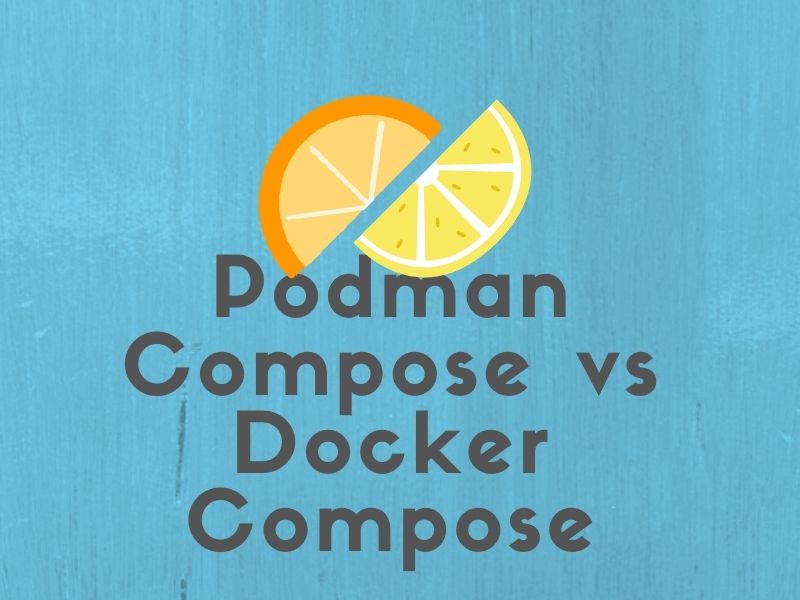Introduction
In the world of containerization and orchestration, tools like Docker Compose have become household names, enabling developers to define and manage multi-container applications with ease. However, there’s a new kid on the block that’s gaining traction – Podman Compose. In this article, we’ll dive into the world of Podman Compose, exploring its features, benefits, and how it simplifies container orchestration.
Table of Contents
What is Podman Compose?
Podman Compose is a powerful tool that enables developers to define and manage multi-container applications, similar to Docker Compose. It falls under the Podman project, which aims to provide a seamless container experience without requiring a daemon to run containers. This tool is particularly useful for orchestrating complex applications that consist of multiple interconnected services.
How Does Podman Compose Differ from Docker Compose?
While both Podman Compose and Docker Compose serve the same purpose – managing multi-container applications – there are notable differences. Unlike Docker, Podman doesn’t require a centralized daemon to run containers, which contributes to improved security and eliminates the single point of failure. Additionally, Podman supports rootless containers, enhancing isolation and reducing potential attack vectors.
Getting Started with Podman Compose
To begin using Podman Compose, you’ll need to install Podman on your system. It’s compatible with various Linux distributions and offers a straightforward installation process. Once installed, you can start defining your multi-container applications using YAML configuration files.
Defining Multi-Container Applications
It allows you to define your application’s structure, services, and network configurations in a YAML file. Each service is defined as a separate container, and you can specify various options such as images, volumes, environment variables, and more. This declarative approach simplifies the process of creating complex application setups.

Using YAML Configuration
The YAML configuration file provides a clear and concise way to define your application’s components and their relationships. You can define services, networks, volumes, and other settings, all organized in a human-readable format.
Declaring Services and Volumes
In its YAML file, you can declare each service your application requires. For instance, if you’re building a web application that includes a frontend and a backend, you would define two services with their respective container images, dependencies, and configurations. Volumes can also be defined to ensure persistent data storage across container restarts.
Running and Managing Applications
Once your Podman Compose YAML file is set up, launching your application is as simple as running a single command. It reads the configuration and automatically starts the defined services, connecting them as specified. You can also manage the application’s lifecycle easily, including starting, stopping, and removing containers.
Benefits of Using Podman Compose
Security and Rootless Containers
One of the standout features of it is its support for rootless containers. Unlike Docker, which requires elevated privileges to run containers, Podman allows you to create and run containers as an unprivileged user. This enhances security by minimizing potential attack vectors and reducing the impact of security breaches.
Compatibility with Kubernetes
It is designed to be compatible with Kubernetes manifests. This means you can take your Podman Compose files and transition them to Kubernetes clusters seamlessly, leveraging the power of Kubernetes for production deployments without a steep learning curve.
Use Cases for Podman Compose
Development Environments
It is incredibly useful for creating development environments that mirror production setups. You can define the same services, configurations, and dependencies in both environments, ensuring consistency and minimizing the “it works on my machine” problem.
Testing and Staging
In testing and staging environments, where you need to validate your application’s behavior before deploying to production, it shines. It allows you to replicate the production environment’s architecture, making it easier to identify and fix issues early in the development process.
Migrating from Docker Compose to Podman Compose
Migrating from Docker Compose to Podman Compose is relatively straightforward. The YAML structure remains largely the same, and Podman provides compatibility options for Docker Compose files. This means you can smoothly transition your existing projects to take advantage of Podman’s features.
Tips for Effective Container Orchestration
Keeping Services Decoupled
When designing your application’s services, it’s crucial to keep them decoupled and modular. This ensures that changes to one service don’t adversely affect others, promoting scalability and maintainability.
Monitoring and Scaling
Utilize monitoring tools to keep track of your application’s performance and resource usage. Additionally, design your services with scalability in mind, enabling you to adjust resources and replicate containers as needed.
Challenges and Considerations
Learning Curve
While transitioning from Docker Compose to Podman Compose might be straightforward, there’s still a learning curve if you’re new to the tool. Familiarizing yourself with the syntax, options, and best practices will ensure a smooth experience.
Ecosystem Differences
While it offers compatibility with Kubernetes, keep in mind that the broader container ecosystem might have differences in terms of available tools, integrations, and resources.
Future of Podman Compose
Podman Compose’s future looks promising, with an active community and ongoing development. As containerization and orchestration technologies continue to evolve, it is likely to see enhancements, new features, and improved compatibility.
Conclusion
In the realm of container orchestration, it emerges as a powerful tool that simplifies the management of multi-container applications. Its unique features, including rootless containers and compatibility with Kubernetes, set it apart from its counterparts. Whether you’re developing, testing, or deploying applications, it offers a user-friendly and secure approach to container orchestration.
FAQs
- Is Podman Compose suitable for production environments? it is suitable for both development and production environments. Its support for rootless containers enhances security, making it a viable choice for production use.
- Can I use Podman Compose with Kubernetes? Yes, it is designed to be compatible with Kubernetes. You can transition from Podman Compose to Kubernetes manifests seamlessly.
- What are the security advantages of it? It’s support for rootless containers reduces security risks by allowing containers to run with lower privileges, minimizing potential attack vectors.
- How does it handle persistent data? It supports volume definitions, ensuring that data persists even when containers are restarted or replaced.
- Can I use it on Windows? Currently, it is more focused on Linux environments, but efforts are being made to improve compatibility with Windows.
